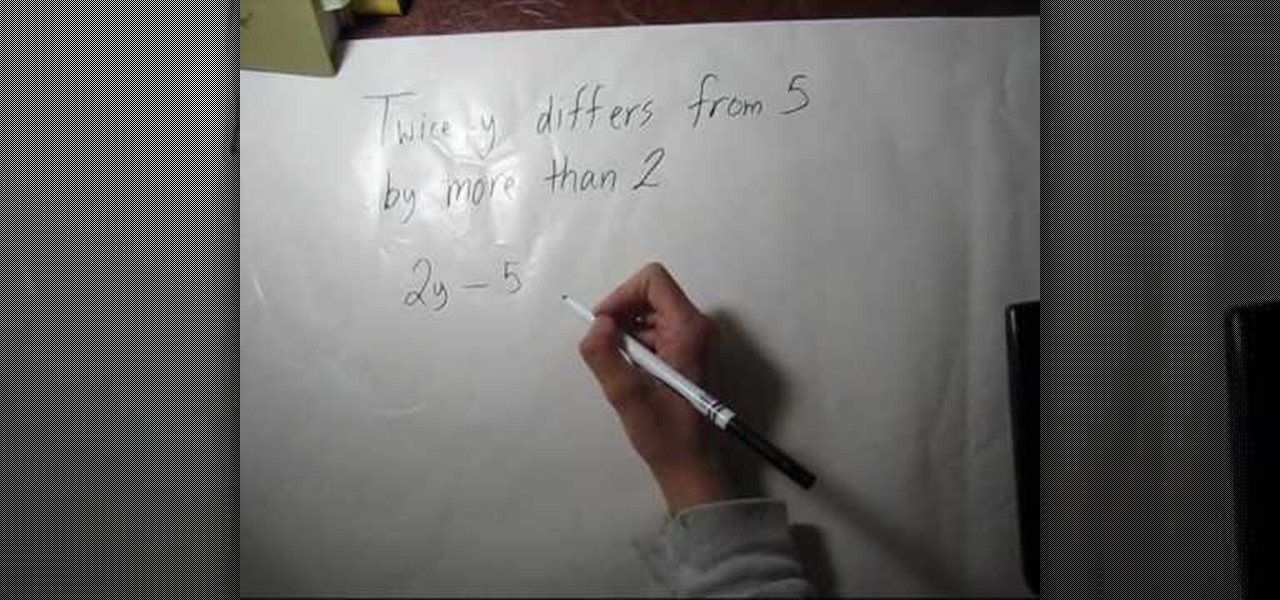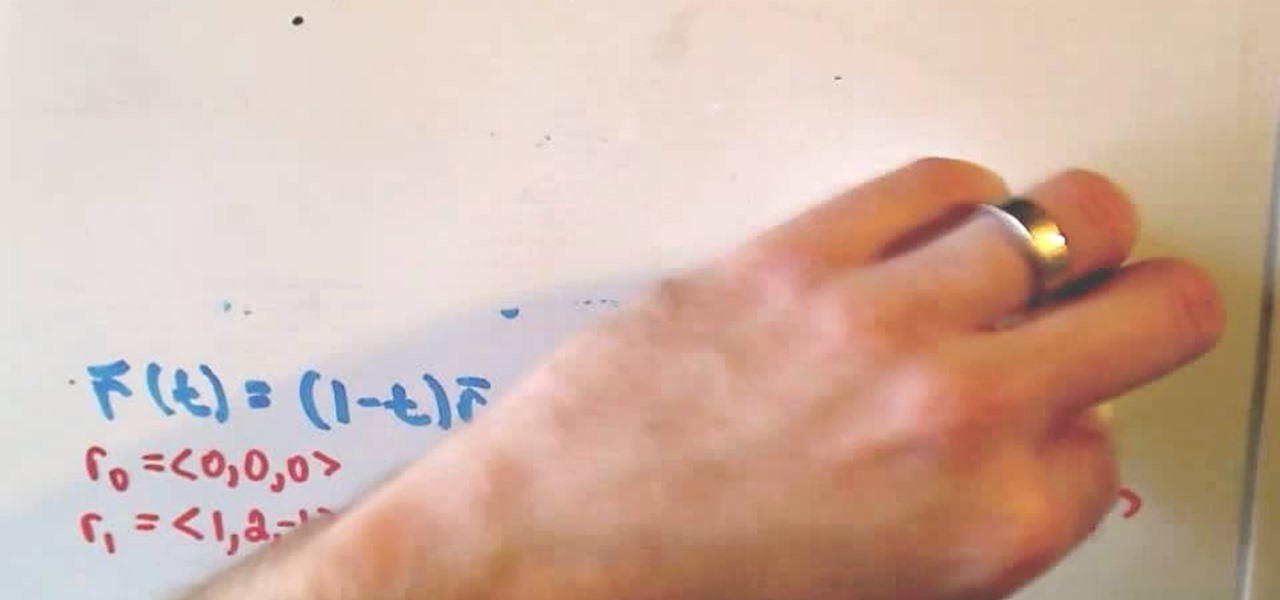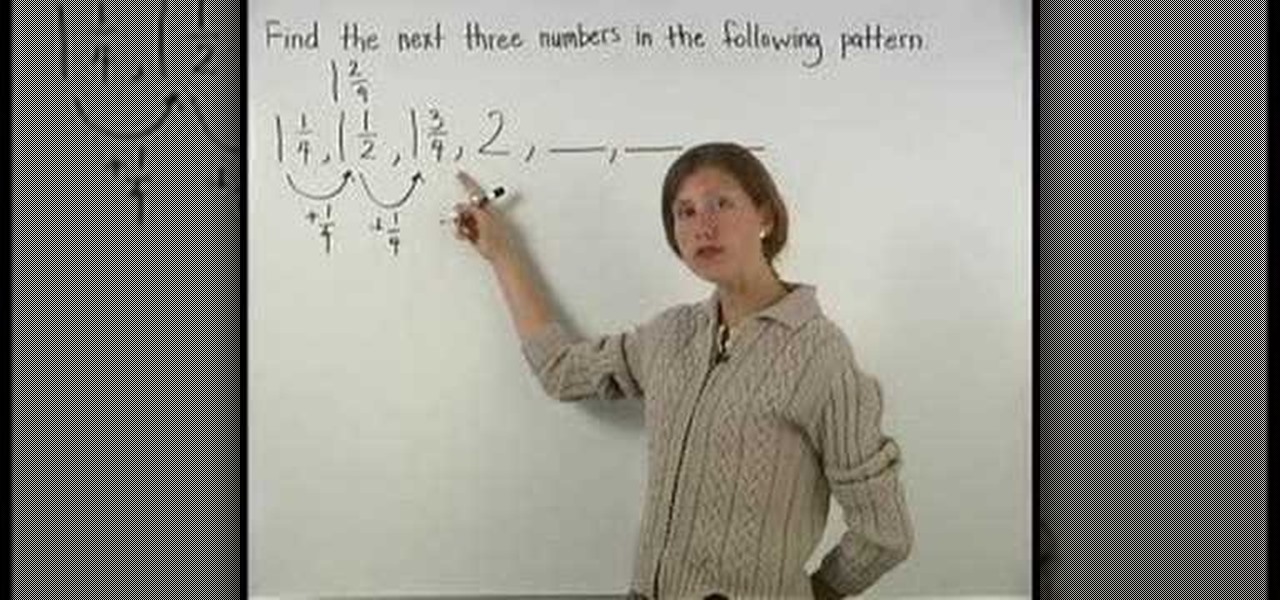Hot Math How-Tos

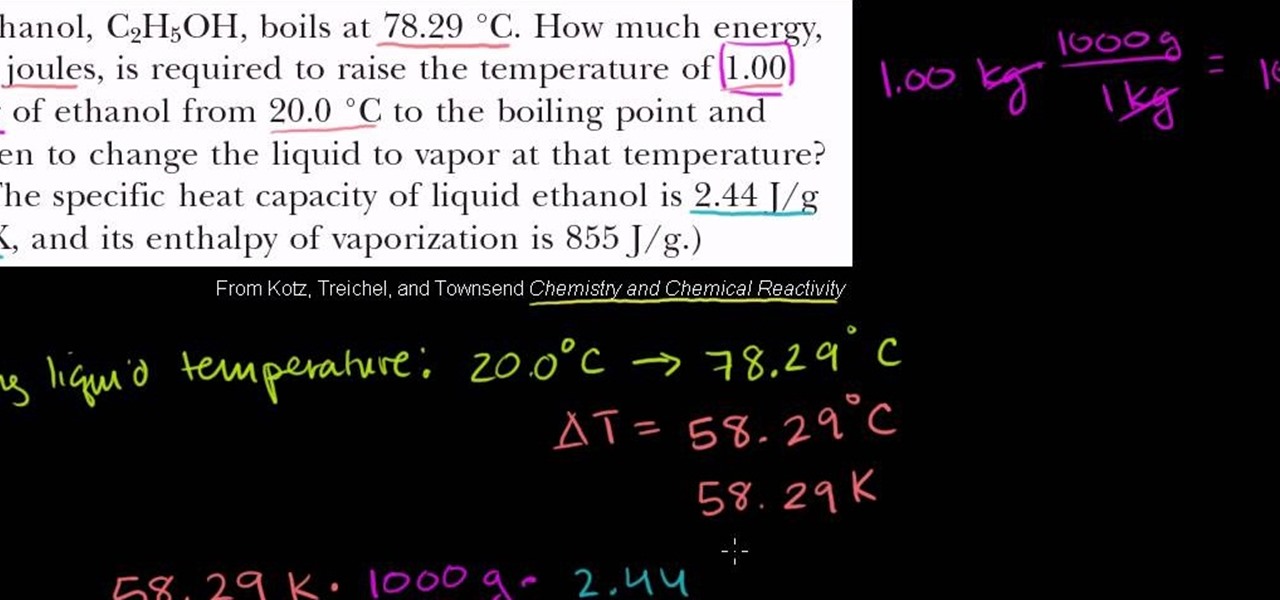
How To: Solve change of state problems in organic chemistry
In this free video chemistry lesson from Salman Khan, we learn about specific heat capacity and vaporization. Whether you need help studying for that next big test or could just use a hand finishing your homework, you're sure to be well served by this video lesson. For all of the details, take a look.

How To: Work with amides, anhydrides, esters and acyl chlorides in chemistry
In this free video chemistry lesson from Salman Khan, we learn how to work with carboxylic acid derivatives. Whether you need help studying for that next big test or could just use a hand finishing your homework, you're sure to be well served by this video lesson. For more information, including detailed, step-by-step instructions, take a look.

How To: Divide a two-digit number into a three-digit number
With this free video math lesson, you'll learn how to do long division with double and triple-digit numbers. With mathematics, as with anything else, not everyone progresses at the same rate. Basic math is no exception. Happily, in the age of Internet video tutorials, this isn't a problem. Those who progress quickly can go beyond what's being taught them and those who are struggling likewise have all the time in the world to catch up.

How To: Explore and decipher fractal geometry and self-similar mathematics
There wouldn't be any chaos in the world without Benoit Mandelbort— chaos theory, that is. Mandelbrot, who just passed away at the age of 85, pioneered fractal geometry and greatly influenced chaos theory. He spent most of his life working in physics, biology and astronomy, and is best known for his Mandelbrot Set, a mathematical set of points in the complex plane (the boundary of which forms a fractal).
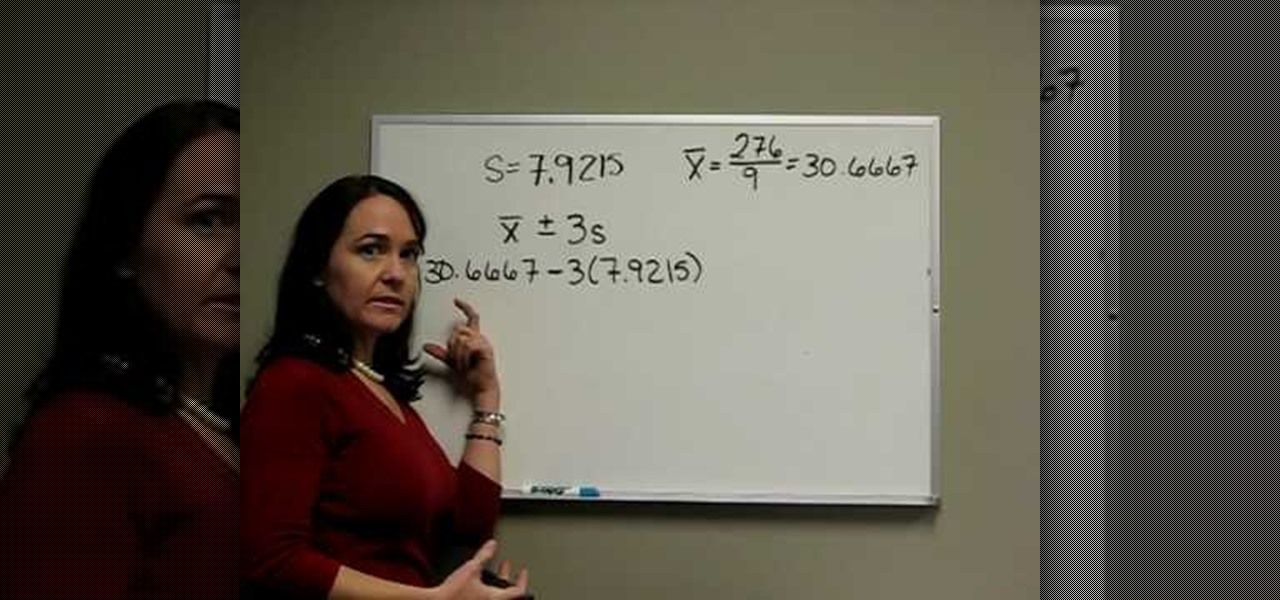
How To: Interpret a standard deviation
A rough definition of standard deviation is that it is a measure of expressing the observed variations about the average in statistical data i.e. by how much do the observed values vary from the mean. This video continues from the previous solved example and demonstrates the mathematical interpretation of the standard deviation that was calculated. We begin with stating the mean and standard deviation values and then calculating the upper and lower bounds of the data based on the standard dev...
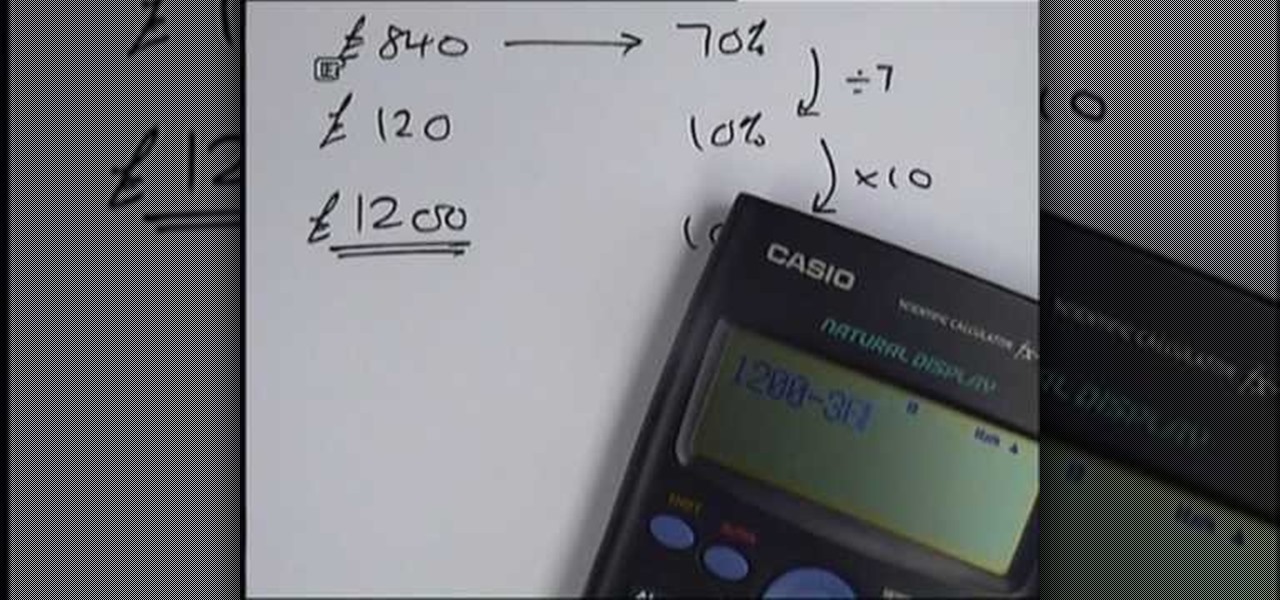
How To: Solve reverse percentage problems
We know the method for answering the question "What is the x percent of y" but, what about the answer to the following question "The x percent discounted price of an article is y. Find the original price." This is a reverse percentage problem that can be solved using the method shown in this video. This video contains three reverse percentage problems. The first two problems are essentially of the same type as explained above. A simple and easy to understand method of finding the original pri...
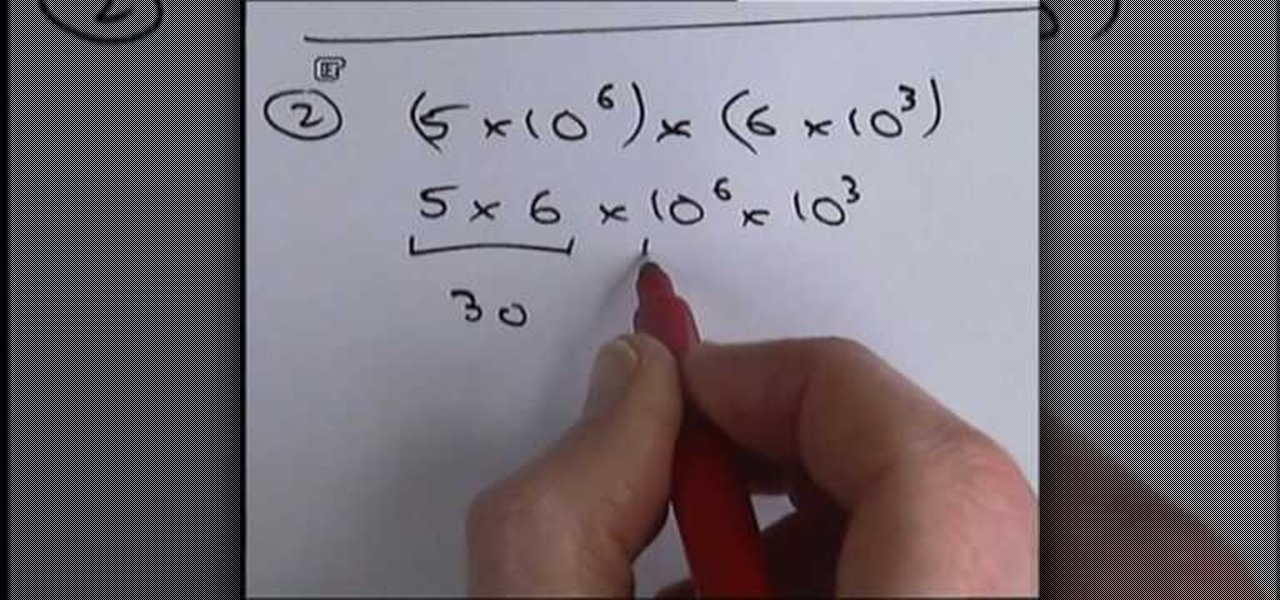
How To: Calculate sums in standard form
When a number is expressed in the form of x multiplied by 10^y such that, x < 10 and y is an integer, the number is said to be in standard form. Standard form of expressing numbers finds its use in scientific and statistical fields. This video demostrates how to express, as well as perform basic mathematical operations namely, addition/subtraction, multiplication and division of numbers in the standard form using four examples/mathematical problems. The first two examples demostrate multiplic...

How To: Increase or decrease by a percentage
In this video, we learn how to increase or decrease by a percentage. First, to increase you will need to find what the percent of the number is. To do this, you will find 10%, which should be very easy. As soon as you've found this, you can add or subtract to find the percent you need. Then, add this onto the original number and you'll know the percentage. To decrease the percentage, you will do the same type of equation. Except, you will need to subtract as you go to finish the problem. When...

How To: Evaluate functions by substituting in the variable to the input given
In this video, we learn how to evaluate functions. When evaluating functions, you substitute in the variable to the input given. Once you do this, you will rewrite the equation filing in the appropriate spots with the numbers that you are given. After this, you will evaluate the equation with the proper steps in math. Once you have figured out the problem, you can do this in reverse to make sure you have the correct answer. This is a very easy process and it doesn't take that long. Just make ...
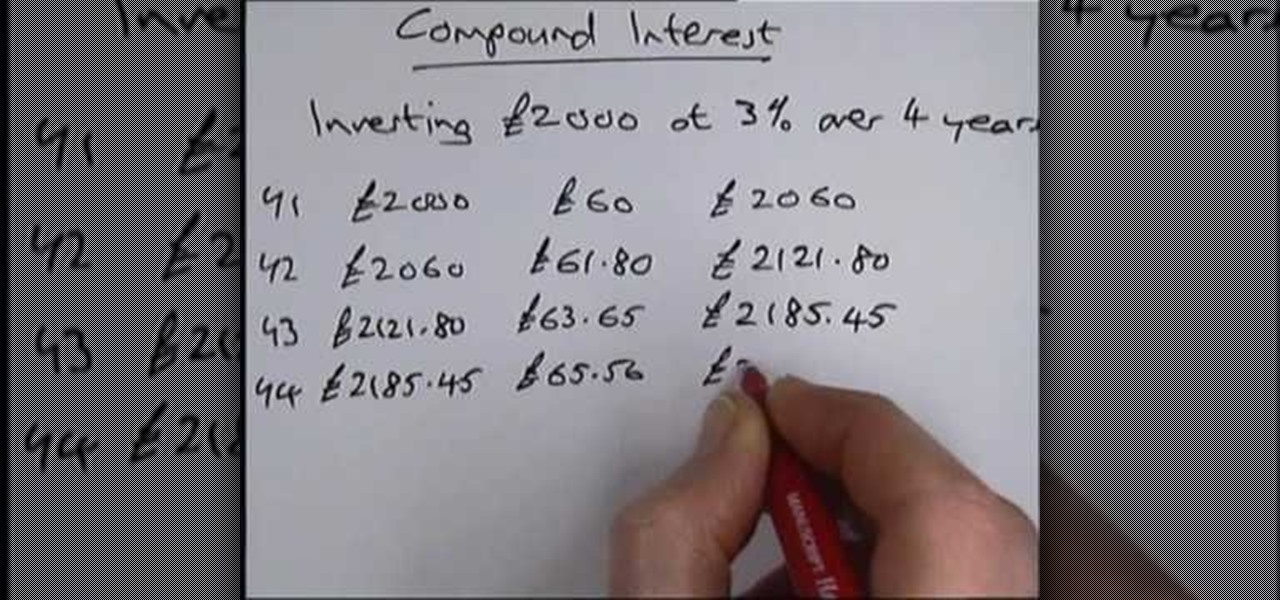
How To: Calculate compound interest in math
In this video, we learn how to calculate compound interest. Start with your example of investing $2000 at 3% interest over four years. Now, write down how much you have at the start of year one. To find the percent of this you will need to simply do the amount divided by one hundred and times it by three. Then, you will find the number for the amount of interest you had for that year. Continue to do this for each year and the amount of money you will increase each year. Do this until you reac...

How To: Calculate the volume of a cube in basic geometry
With mathematics, as with anything else, not everyone progresses at the same rate. Geometry is no exception. Happily, in the age of Internet video tutorials, this isn't a problem. Those who progress quickly can go beyond what's being taught them and those who are struggling likewise have all the time in the world to catch up. With this free video math lesson, you'll learn how to calculate the volume of any cube.

How To: Calculate the volume of a triangular solid or triangular prism
With mathematics, as with anything else, not everyone progresses at the same rate. Geometry is no exception. Happily, in the age of Internet video tutorials, this isn't a problem. Those who progress quickly can go beyond what's being taught them and those who are struggling likewise have all the time in the world to catch up. With this free video math lesson, you'll learn how to calculate the volume of a triangular prism.
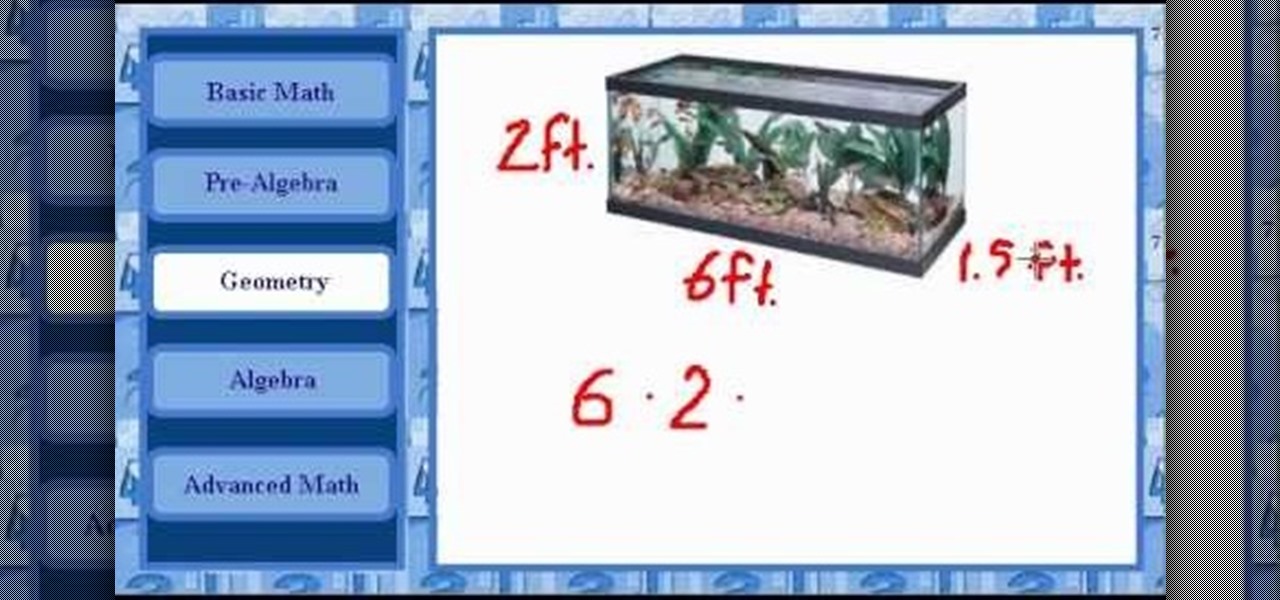
How To: Calculate the volume of a rectangular solid
With mathematics, as with anything else, not everyone progresses at the same rate. Geometry is no exception. Happily, in the age of Internet video tutorials, this isn't a problem. Those who progress quickly can go beyond what's being taught them and those who are struggling likewise have all the time in the world to catch up. With this free video math lesson, you'll learn how to calculate the volume of a rectangular solid.
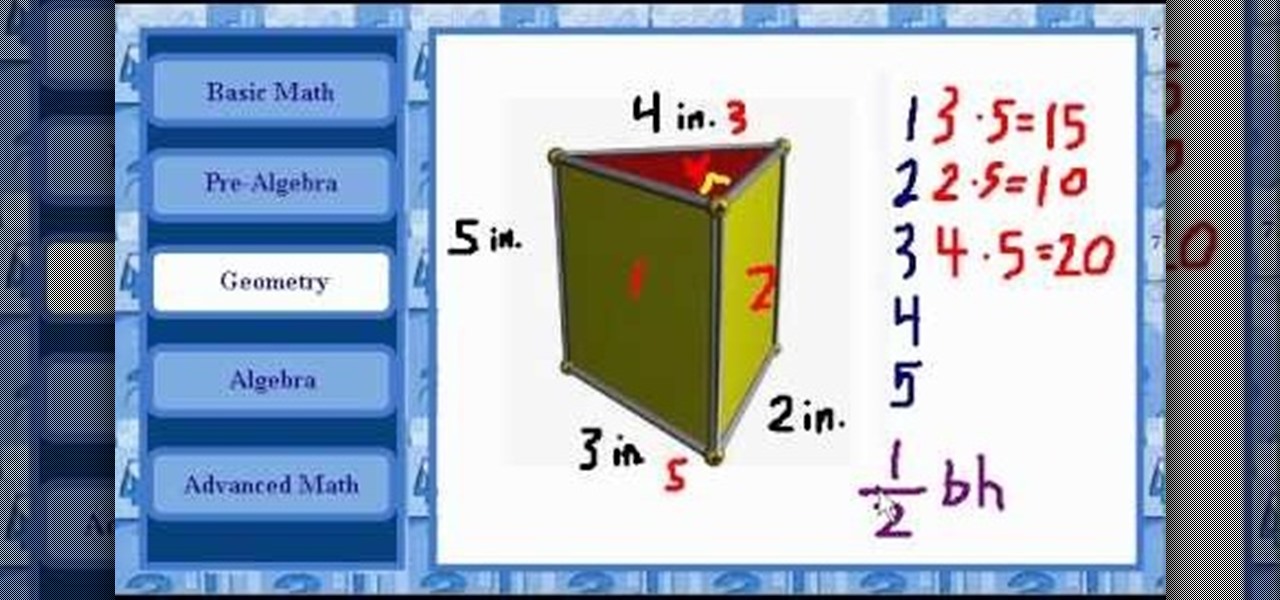
How To: Calculate the surface area of a triangular solid in geometry
With mathematics, as with anything else, not everyone progresses at the same rate. Geometry is no exception. Happily, in the age of Internet video tutorials, this isn't a problem. Those who progress quickly can go beyond what's being taught them and those who are struggling likewise have all the time in the world to catch up. With this free video math lesson, you'll learn how to calculate the volume of a prism.
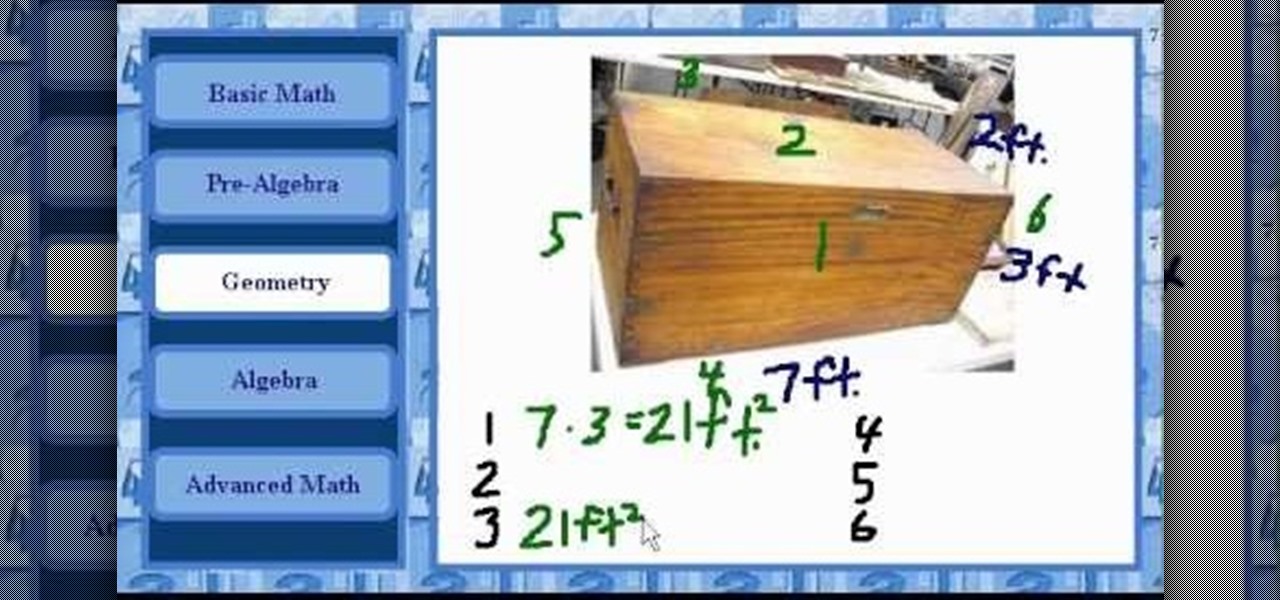
How To: Calculate the surface area of a rectangular solid in basic geometry
With mathematics, as with anything else, not everyone progresses at the same rate. Geometry is no exception. Happily, in the age of Internet video tutorials, this isn't a problem. Those who progress quickly can go beyond what's being taught them and those who are struggling likewise have all the time in the world to catch up. With this free video math lesson, you'll learn how to calculate the surface area of a rectangular solid.

How To: Read a schoolbox ruler
In this tutorial, we learn how to read a school box ruler. A ruler will be divided into inches, each inch will be divided in half. From there, it will be in quarters, then eighths, then sixteenths. Once you understand how the inches get divided up into halves, you will be able to read the ruler better. Start off by counting the small lines that you see on the ruler to get an idea of where the eight, quarter, and half inches are located at. After practicing this, you will be able to read a rul...

How To: Know the ruler
In this tutorial, we learn how to know the ruler. An inch ruler will have 12 inches on it. Each mark will be right next to these. Half of these marks will be a half an inch and the half of those with be an eighth. Half of this will be a sixteenth. On the other side of the ruler, you will see the metric system of the ruler, which is not used in the United States. It has centimeters listed on it instead of inches. To use the ruler, you will need to look at the mark it is on, then count the smal...
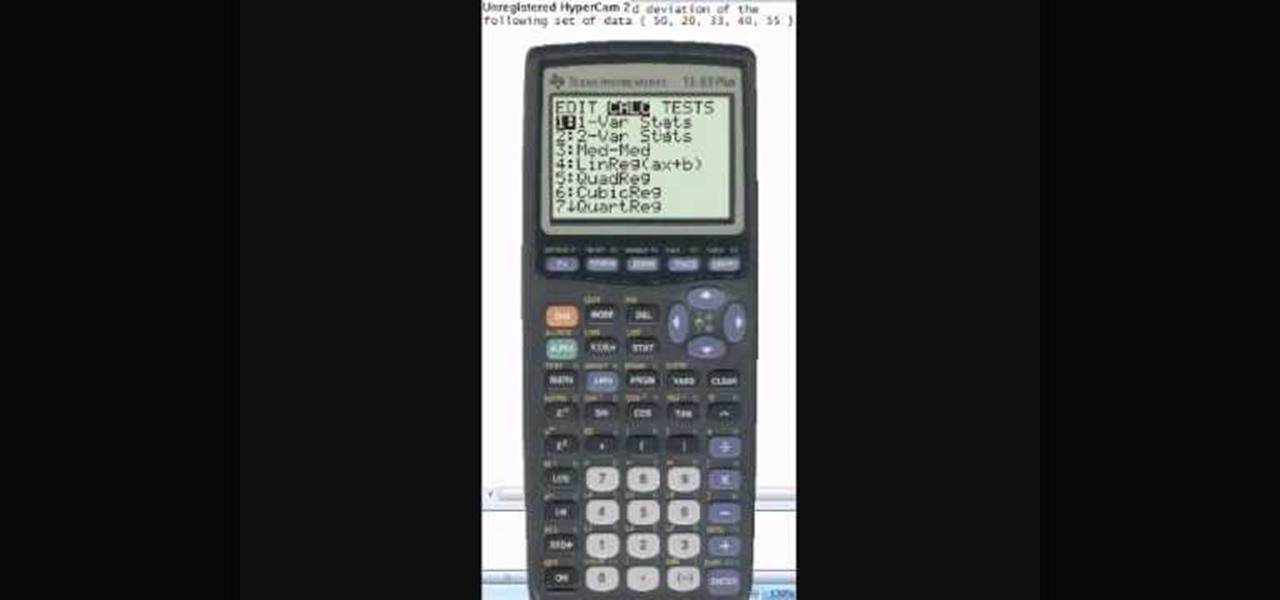
How To: Calculate standard deviation with graphing calculator
This video tutorial is in the Education category which will show you how to calculate standard deviation with TI graphing calculator. First you got to enter the data in to the calculator. Go to stat and click on enter. This will edit a list. Now you type in these numbers: 50, 20, 33, 40 and 55. Then press stat and click on enter. This will bring up the 1-var stats page. Press the "2nd" button and L1, because all our data is in L1. Click on enter and you will get all the data that you will nee...

How To: Find the determinant & area of a parallelogram
In this video, we learn how to find the determinant & area of a parallelogram. The determinant of a 2x2 matrix is equal to the area of the parallelogram defined by the column vectors of the matrix. Graph both of the equations that you are given on the vertical and horizontal axis. After you have all of the coordinates in place, you will be able to plug in the correct numbers to figure out what the answer to the equation in. This is more advanced math, so if you have not done it before, you sh...
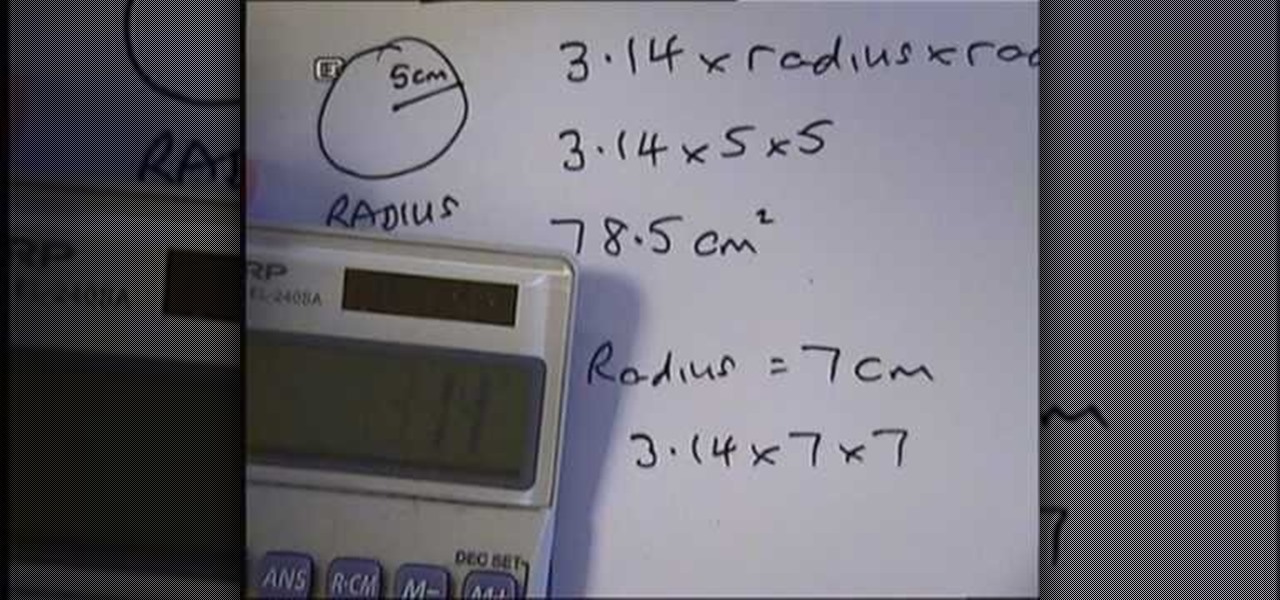
How To: Find the area of a circle
In this tutorial, we learn how to find the area of a circle. The line from the middle to the edge of the circle is called the radius. Find what this is in your equation, then multiply (3.14 X radius x radius). This will always work out the area of a circle for you. So, do this equation with your calculator or by hand, then you will have the correct answer for the area. Make sure to add the units squared after you get the answer. If you are given the diameter (line all the way across), you wou...

How To: Divide and give an answer as a fraction
In this video we learn how to divide and give an answer as a fraction. If you are starting out with a simple fraction, you will simply take the number before the divide sign on the top and the second number on the bottom. If you end up with a number that is able to be simplified, make sure you take it down to it's most simple version possible. You can end up with a top heavy fraction, which means there will be whole numbers involved. Do the division to figure out how many times the bottom num...
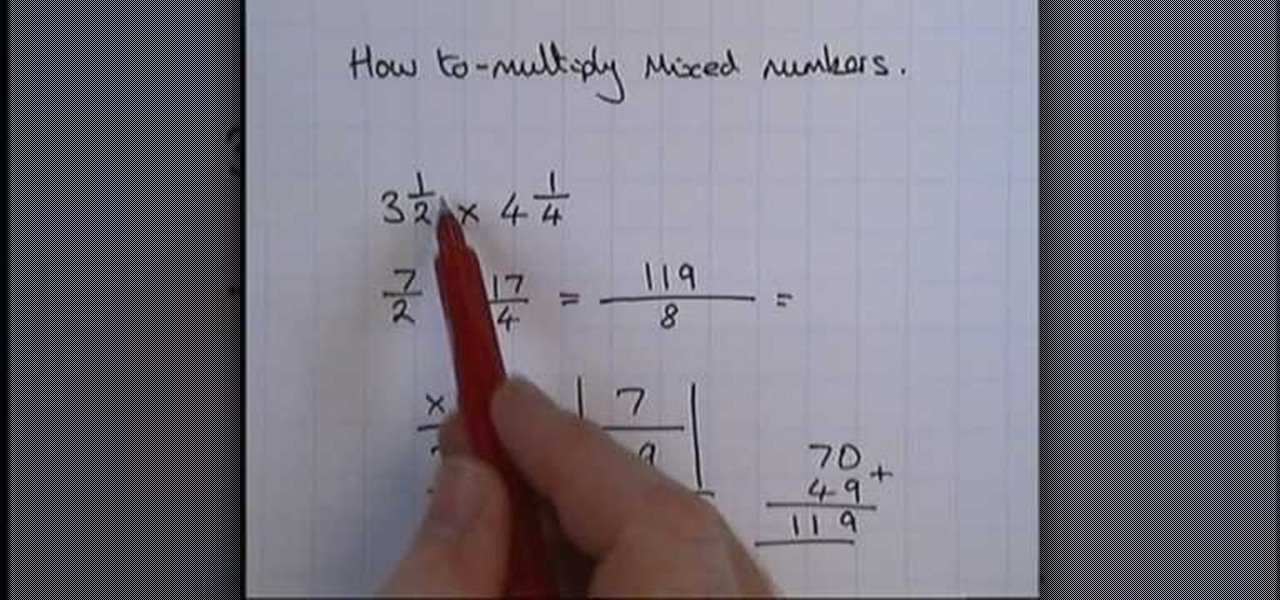
How To: Multiply mixed numbers together
In this video we learn how to multiply mixed numbers together. First, take your mixed numbers and write them into an equation. Next, convert the numbers both to top heavy fractions. Now, multiply the top numerators together and then the denominators together. If you can't work out the numbers in your head use a method by writing it out in a table. As soon as you finish and end up with a final fraction, you need to simplify this. Find how many of each number goes into the larger one and then t...

How To: Subtract basic fractions in simple mathematics
This video tutorial is in the Education category which will show you how to subtract basic fractions in simple mathematics. You can do basic subtraction of fractions if the denominators are the same. If they are not, then find the lowest common multiple of the denominators and convert the denominators to their lowest common multiple. For example, to subtract 1/2 from 3/4 find the common multiple of 2 and 4, which is 4. So, the problem 3/4 - 1/2 can now be written as 3/4 - 2/4. Since, the deno...
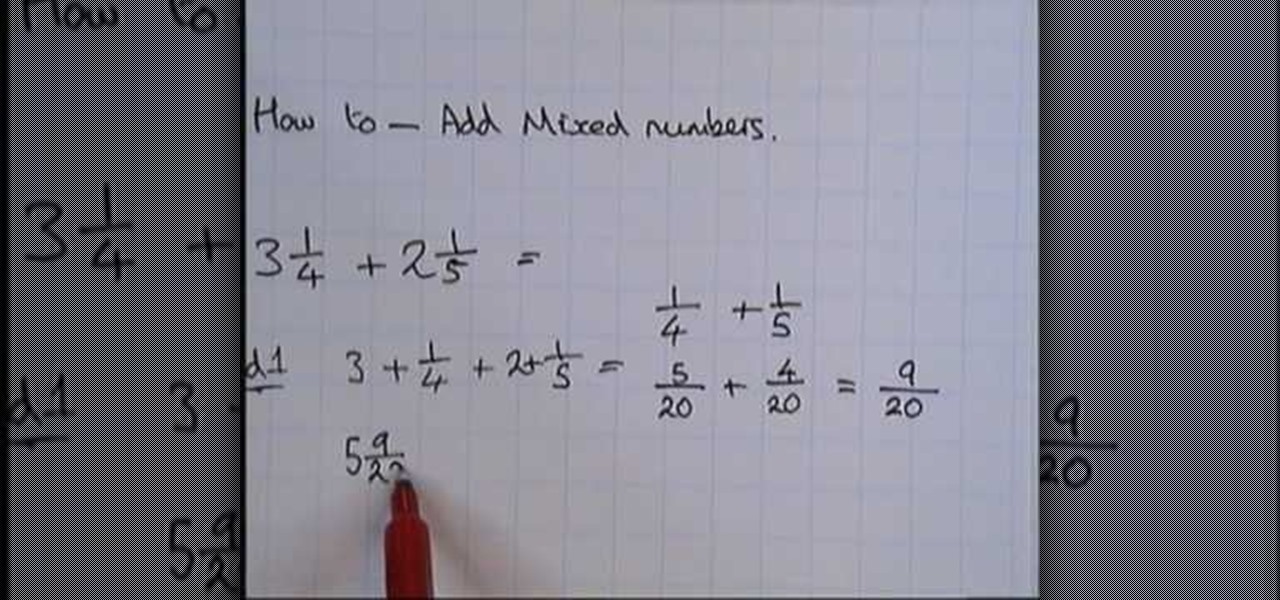
How To: Add mixed numbers
A mixed number is just another way of expressing a fractional number. This video shows two methods by which two mixed numbers may be added.
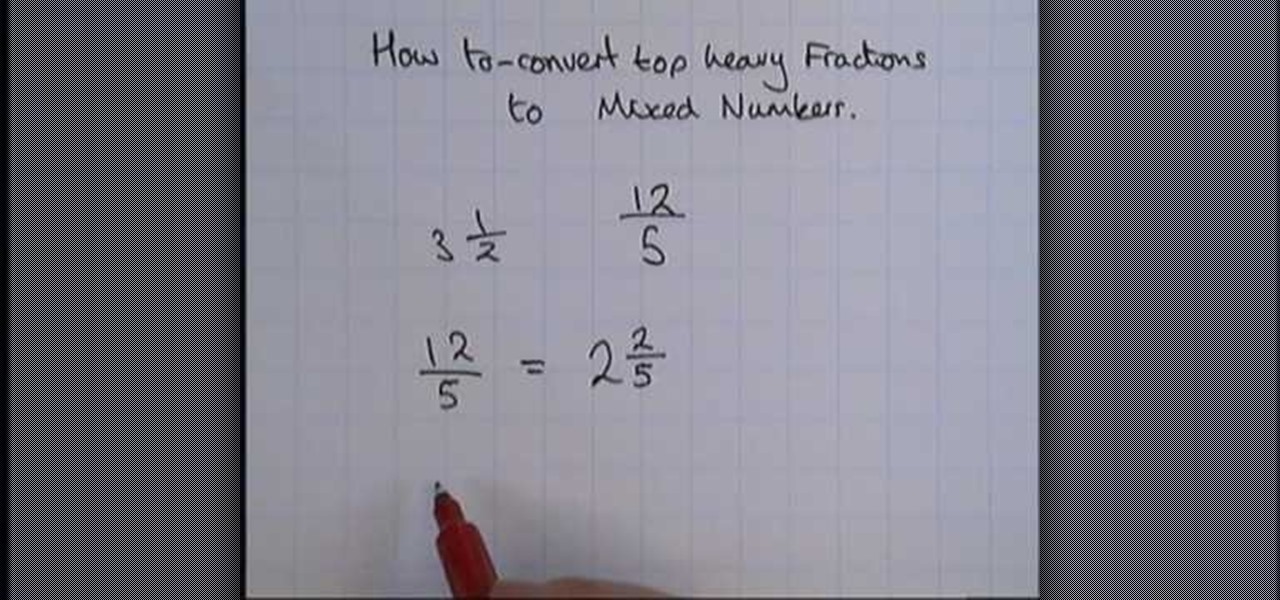
How To: Convert top heavy fractions to mixed numbers
This is a video tutorial in the Education category where you are going to learn how to convert top heavy fractions to mixed numbers. Top heavy fractions are fractions with numerators greater than denominators. Mixed numbers are combination of whole numbers and fractions. To convert 12/5, find out how many 5s are in 12. The answer is 2 and after you remove two 5s from 12, you are left with 2. So, 12/5 is equal to 2 2/5. Similarly, in 10/3, you have three 3s in 10 and you are left with 1. So, 1...

How To: Change decimals to fractions
In this tutorial, we learn how to change decimals to fractions. First, you will take your decimal and put it over 1. Any number divided by 1 will be that number that you started with. To get rid of the decimal, you can multiply it by hand and moving the numbers to the left. To keep the number the same, you also have to multiply the bottom of the fraction by the same number. Now, you can just simplify the fraction and you will end up with the correct number! This is easy to do and is a great b...
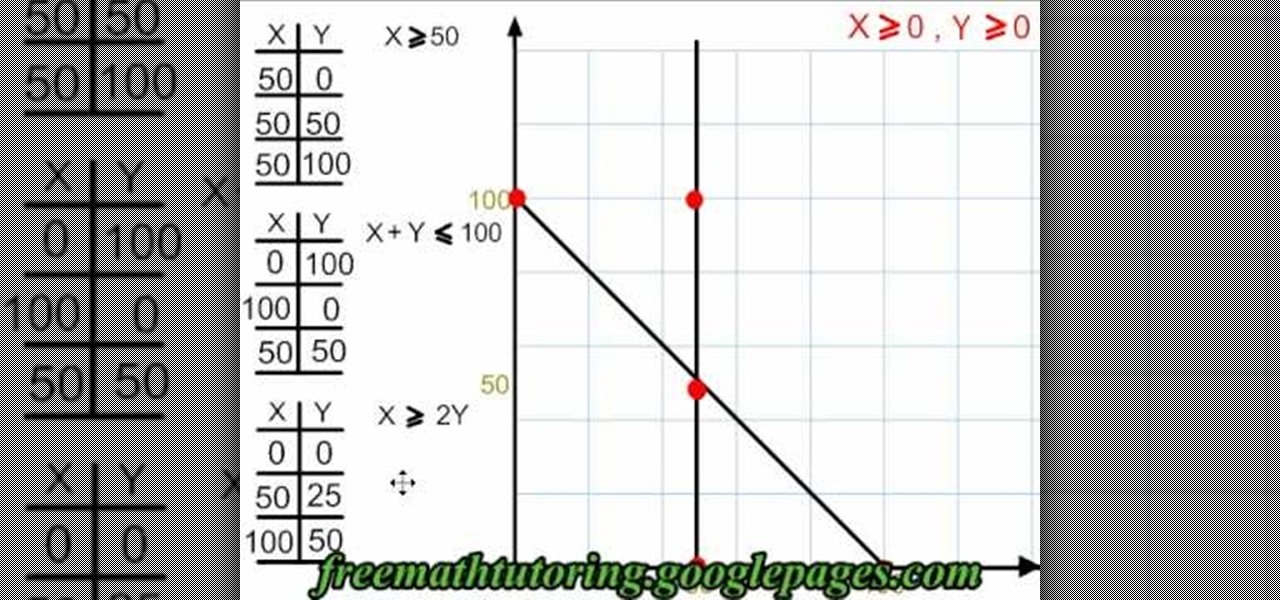
How To: Graph & shade a polygon of constraints
This video shows us how to graph & shade a polygon of constraints. Start out by finding the non zero constraints and the other constraints and inequalities. You will need to know how to graph before you begin to do this equation. Look at the first constraint and then fill in the X and Y sign in your table. Continue on to do this for the other two constraints that you have. Once you have these written down and in front of you, it's just a matter of graphing. Start to graph with the given coord...

How To: Convert recurring decimals to fractions
In this video we learn how to convert recurring decimals to fractions. Start off by writing out the decimal with the dot next to it to show that it's recurring. This means that the number goes on forever and doesn't stop. To convert this to a fraction, write down the number as the numerator. On the bottom you will put the number 9 always. Now, you can divide these two numbers with each other using a calculator. Once you do this, you will get the correct answer. Once you divide it out, you wil...
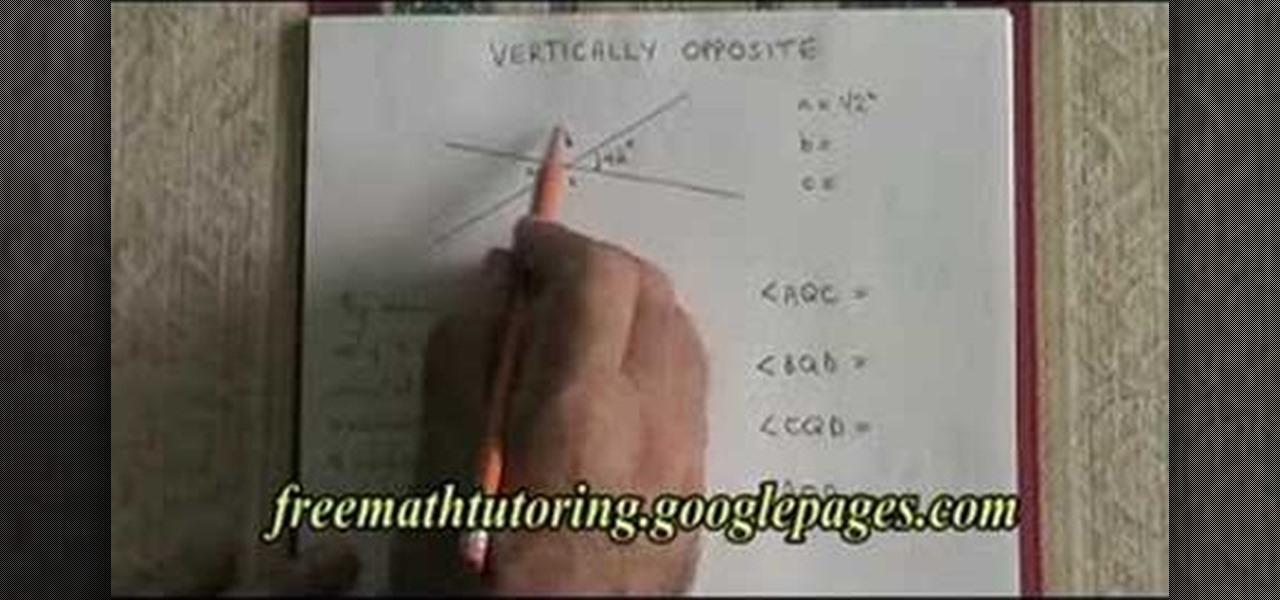
How To: Understand the rule of vertically opposite angles
In this video we learn how to understand the Rule of Vertically Opposite Angles. This says that when two straight lines cross it produces vertically crossed lines that must have congruent angles. Because the lines are straight this has to happen. Remembering the rule "supplementary" you will be able to calculate the angle of A and B in the equation. Prove what each of the angles are using the different rules and then move onto the other two angles. Angle C can be figured out by knowing that i...

How To: Convert Fahrenheit to Celsius
In this tutorial, we learn how to convert Fahrenheit to Celsius. The equation that you will use to figure out Celsius is: C= F-32 (5/2). Once you do this, you can start to fill in the equation with the correct numbers that go in the spots. Continue to do this until you have reached the end of the equation. When you reach the end, you will have converted Fahrenheit to Celsius. This is a great way to convert temperature if you are traveling or following directions and need to convert these quic...

How To: Change fractions to decimals
In this tutorial, we learn how to change fractions to decimals. Once you learn how to do this, it can help you learn more levels of math. Start out with easy problems and work your way up to more difficult ones. First, try rewriting the equation. Take your top numerator and divide it out by hand by your denominator. After you have done the long math for this, the number that is on the top of the division sign will be your answer. You will need to have a good sense of what numbers add into wha...
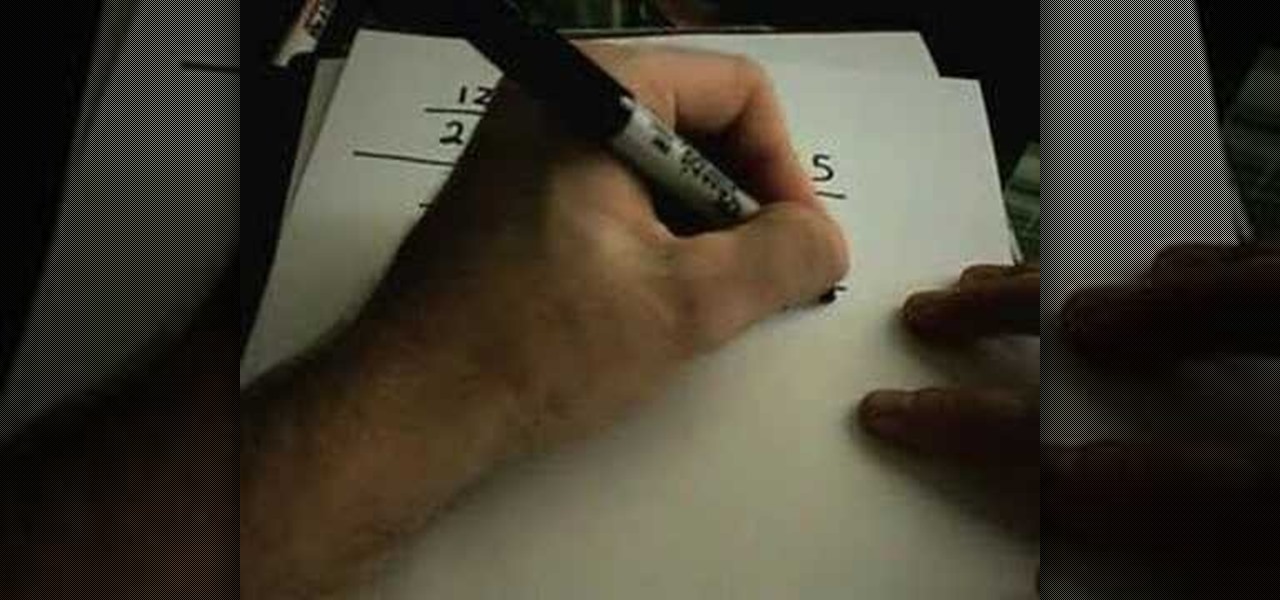
How To: Divide & multiply fractions with numerous examples
In this video, we learn how to divide & multiply fractions with numerous examples. If you have a normal fraction, you will just multiply across the equation to multiply it. To divide the fraction, you will multiply it by the flip of the fraction. Once you do this, you will have both of these equations figured out. Make sure you reduce the fraction as much as possible by seeing what number goes into both the denominator and the numerator. After you do this, you will have the best possible answ...
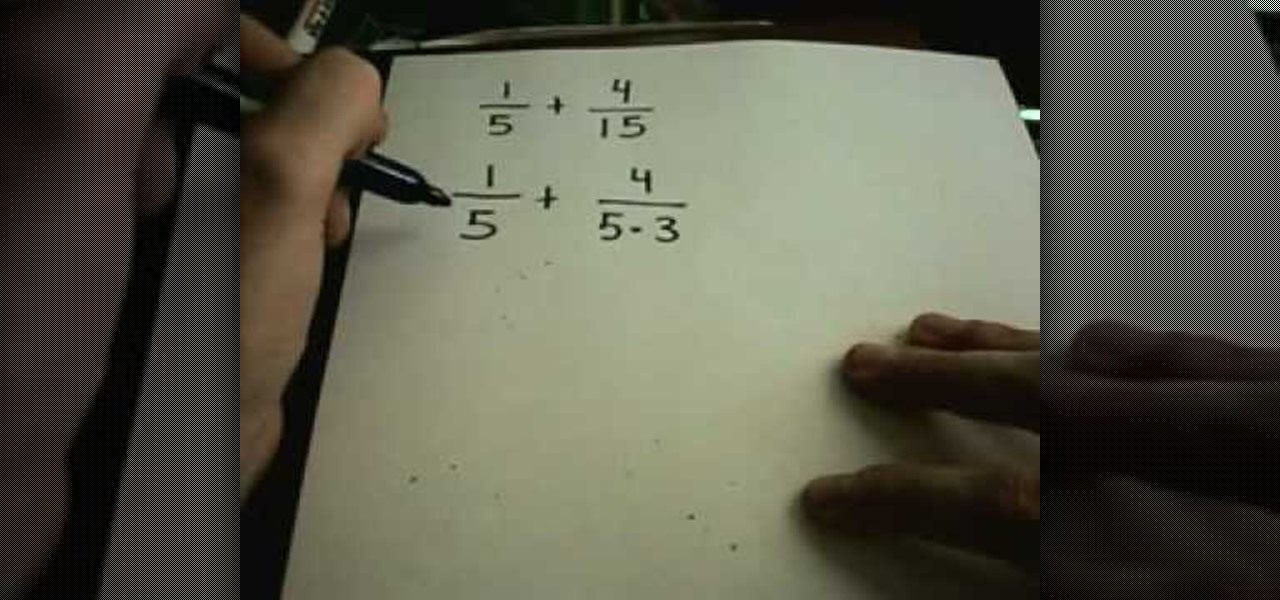
How To: Add and subtract fractions with numerical examples
In this video, we learn how to add and subtract fractions with numerical examples. First, write down an example on a piece of paper to add two fractions together. To do this, you will write out the denominator in the common form and then add the numerators together. If you don't have common denominators you will have to find them. When subtracting, it's basically going to be the same process. Go through the same steps to figure out what the answer will be. Use the basic rules of math to get t...
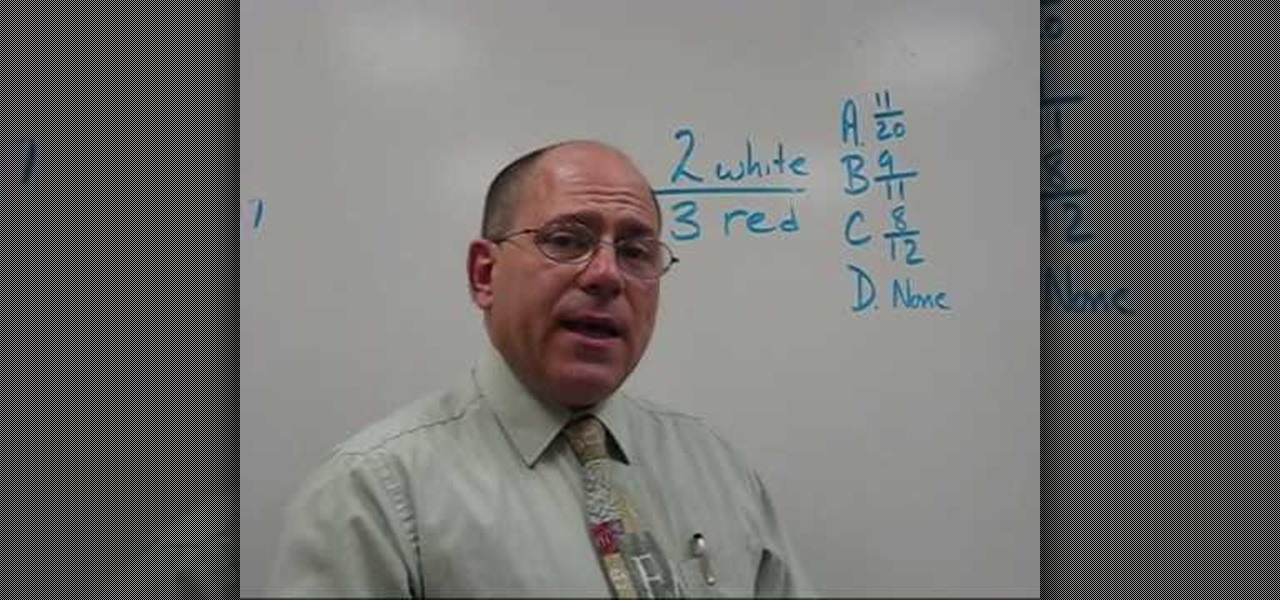
How To: Understand and determine equivalent fractions
In this video, we learn how to understand and determine equivalent fractions. If you have an equation with an equivalent fraction, you will first multiply the first numerator by the second denominator. Then, you will divide this answer by the denominator of the first fraction. After you do this, it will give you the correct answer. You can also do the reverse multiplication for this to check your answer and make sure you are correct. You can get an answer no matter what the numbers in the equ...

How To: Find the area of a trapezoid
In this video, we learn how to find the area of a trapezoid. The formula to figure out how to find the answer is: Area= 1/2x (base1 x base2) x height. Now, find the bases and the height of the trapezoid. Remember that the height must always be perpendicular to the bases. Once you have found these, add the bases and multiply by the height. You can use a calculator to do this or do it off hand if you're good with math. For the third step, divide the answer by 2 and then write down the answers w...
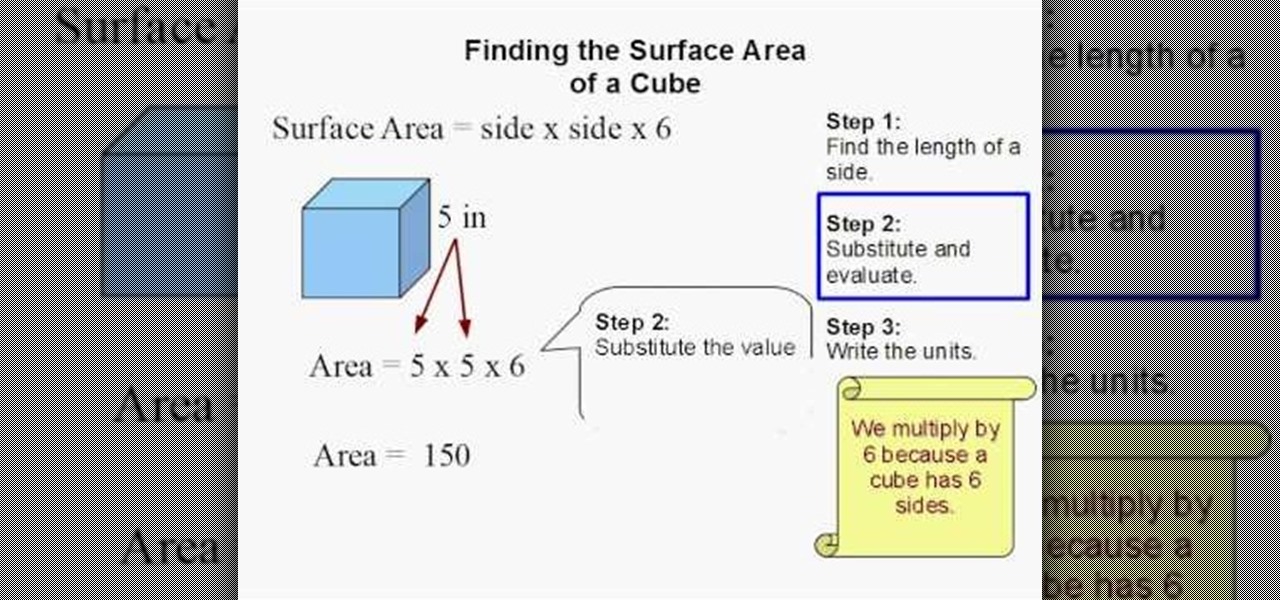
How To: Find the surface area of a cube
In this video, we learn how to find the surface area of a cube. Finding the surface area of a cube is something everyone will have to do in math. The easy formula to figure out this is: surface area= side x side x 6. Your first step to figuring out the problem is to find the length of a side. Once you have found this, you will substitute and evaluate the numbers in the equation. After this, write the units in for the problem. You will then come up with the answer of the equation with the unit...

How To: Multiply fractions, polynomials, signed numbers, exponents, and square roots
Multiplying two whole numbers together is pretty easy, it's multiplying all the other types of numbers out there where it gets tricky. Watch this video for quick instructions on how to multiply fractions, exponents, polynomials, signed numbers, and square roots.

How To: Divide numbers with exponents
In this tutorial, we learn how to divide numbers with exponents. The quotient rule states that we can divide two powers with the same base by subtracting the exponents. With the same base, you can subtract the exponents to get something that would be the answer. For example, if you have 6(to the fourth) divided by 6(to the second), this would come to equal 6(to 4-2). This would break down to equal 6(to the second power). Once you have this, you will be able to do the math for this and figure ...
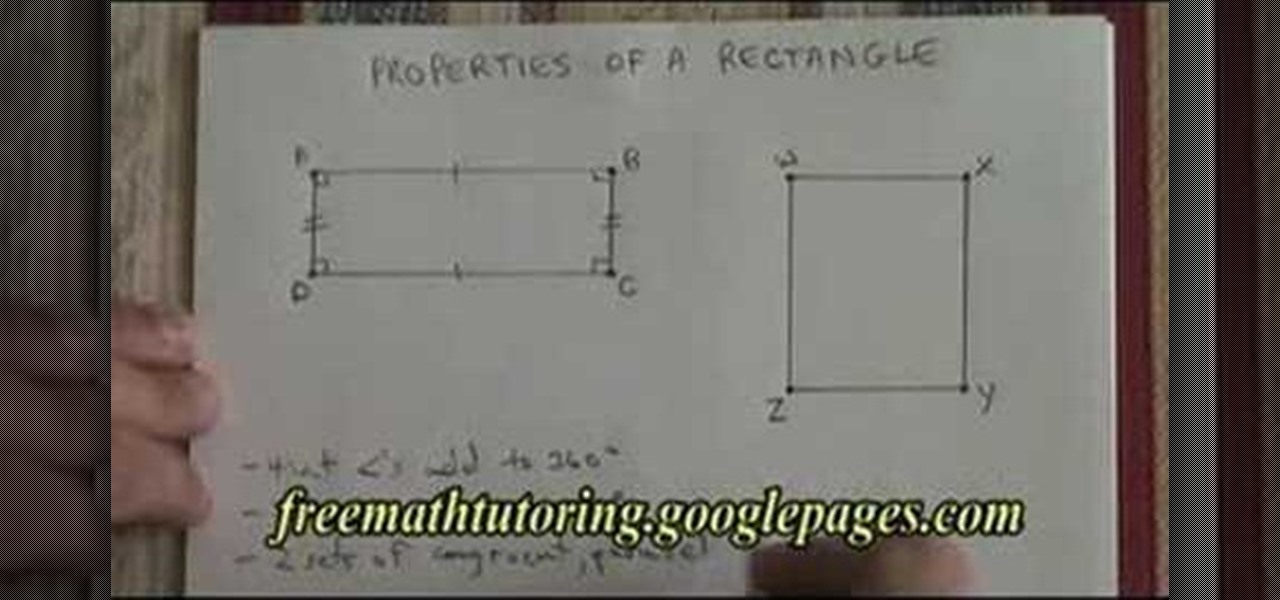
How To: Understand the properties of a rectangle
In this tutorial, we learn how to understand the properties of a rectangle. A rectangle has four interior angles that add up to 360 degrees. All of the angles have to be exactly 90 degrees in a perfect rectangle. Two opposite sides have to be congruent and parallel. The other opposite sides also have to be congruent and parallel. The diagonals of the rectangle are not perpendicular but they are congruent and they intersect at the mid points. Diagonals are not perpendicular, but they are congr...
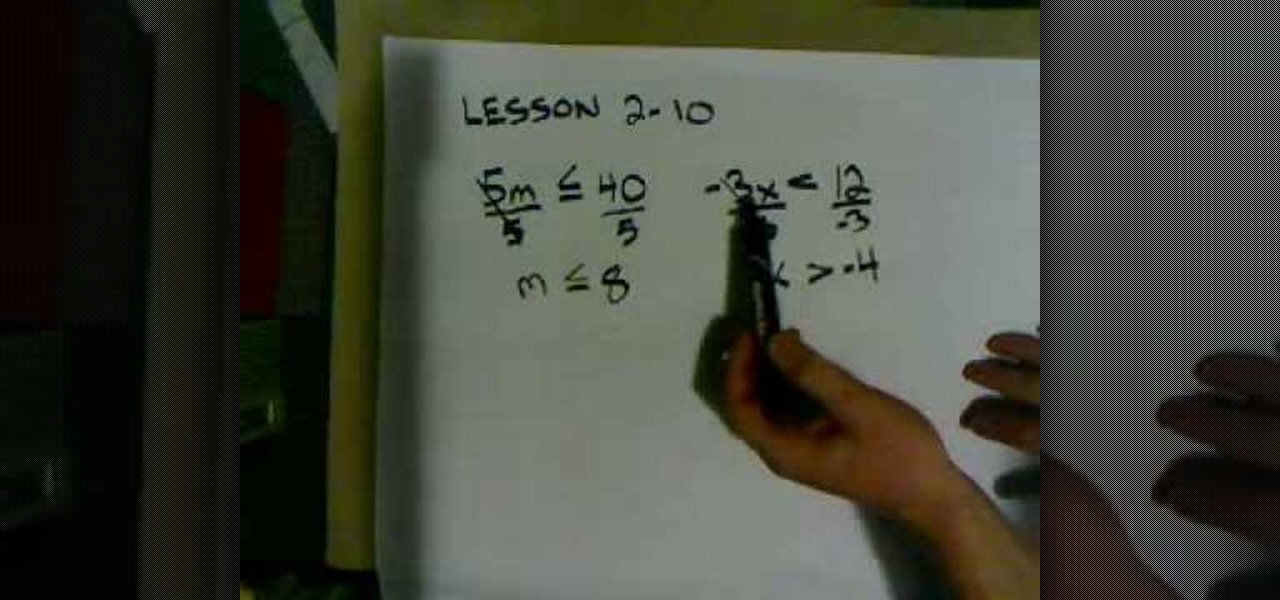
How To: Solve inequalities by multiplying or dividing
In this tutorial, we learn how to solve inequalities by multiplying or dividing. Start out with your equation written out in front of you. Now, find the variable in the equation and figure out how to get rid of the denominator underneath it. Divide this on both sides, then you will be left with the variable with the inequality. Don't flip the inequality if you don't divide by a negative on both sides. Then, write out the rest of the equation. Once finished, do the rest of the math for the rig...




